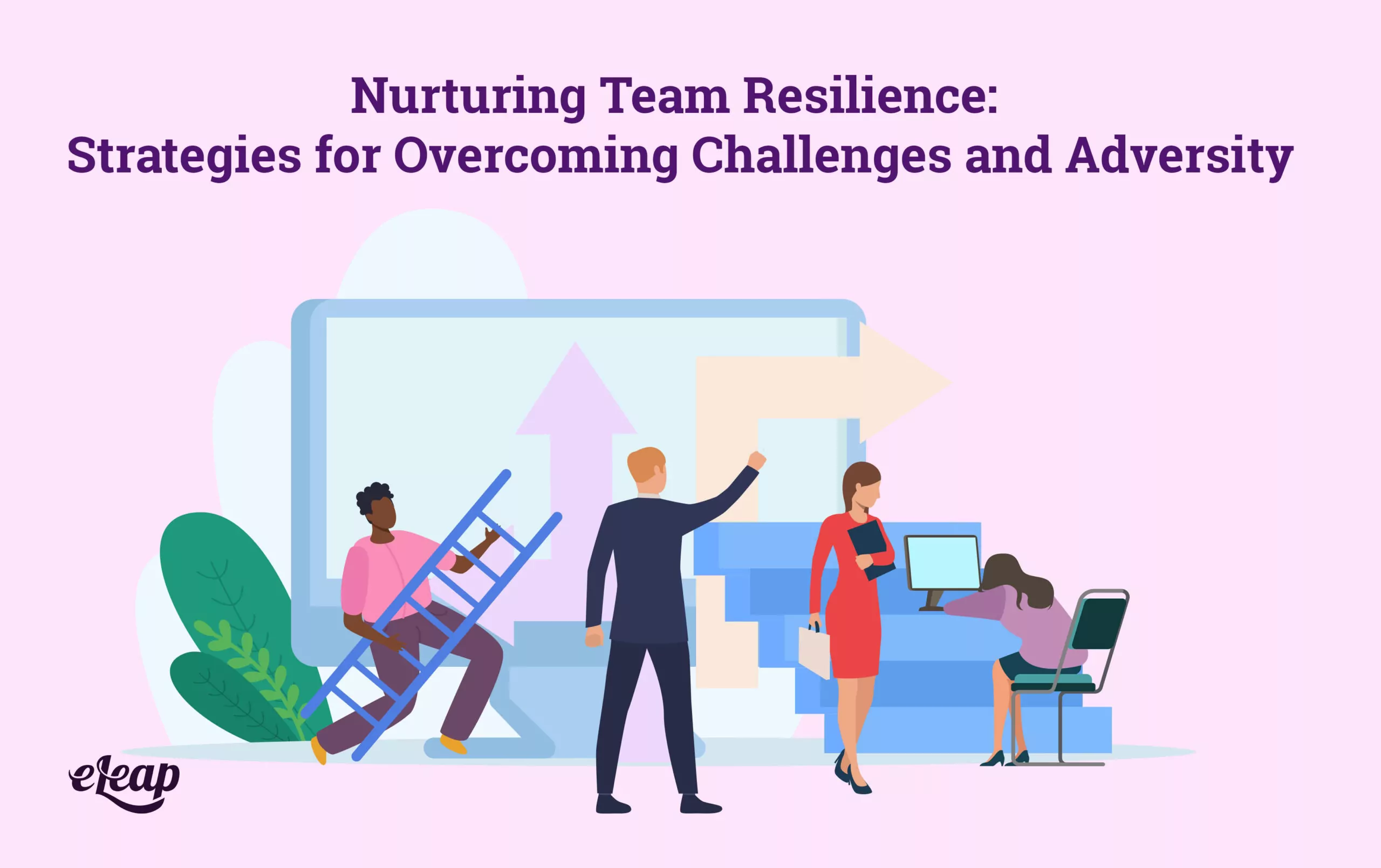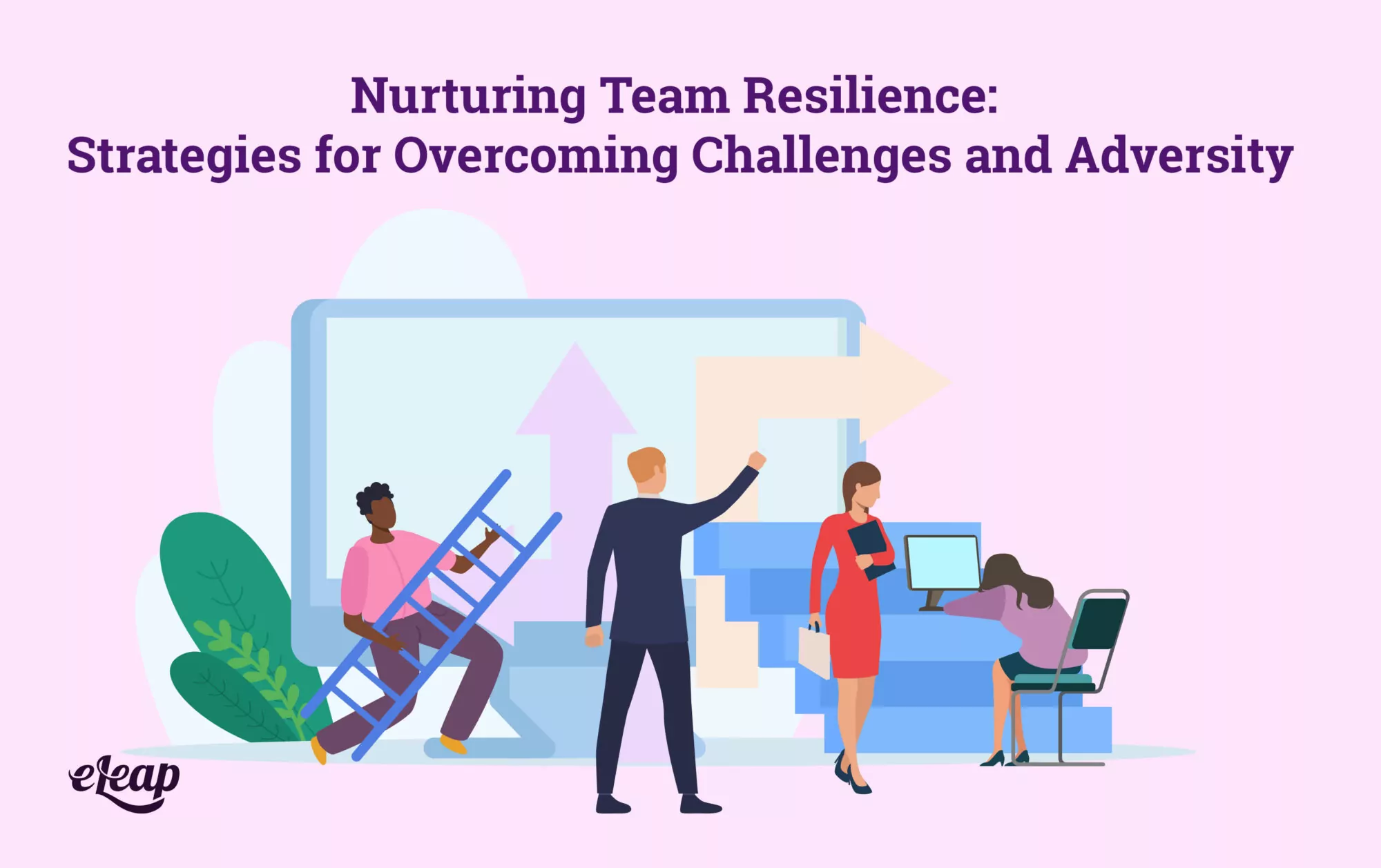Nurturing Team Resilience: Strategies for Overcoming Challenges and Adversity

A scene unfolds: The championship game hangs in the balance during its final minutes. The team is down by a few points, and the prospect of victory appears bleak. Yet, in a remarkable turn of events, the team unites, drawing upon their collective strengths, adjusting their tactics, and persevering through exhaustion. With determination, they manage to reverse the tide and snatch victory from the brink of defeat. This is a perfect embodiment of team resilience. Explore how eLeaP®’s Performance Management Platform can simplify evaluations, boost productivity, and drive measurable results.

In the dynamic business world, organizations often face similar high-stakes situations. The ever-changing market landscape, shifting customer demands, and unforeseen challenges can test the mettle of any team. Victory in this corporate battleground hinges on resources or skills and team resilience – the combined capacity to recover, adapt, and flourish amidst adversity.
Sutcliffe and Vogus (2003) found that resilient teams were characterized by a shared belief in their collective competence, a commitment to learning and adaptation, and a culture of trust and psychological safety. These characteristics allowed teams to manage unexpected challenges and recover from setbacks effectively.
Demystifying the Concept of Team Resilience
To fully grasp the significance of team resilience, it’s essential to comprehend what it embodies. Team resilience is not merely about enduring difficulties or surviving crises. Instead, it encompasses the collective capacity of a team to bounce back, adapt, and even grow amidst adversity. Resilient teams don’t merely withstand challenges; they use these trials as catalysts for innovation, fostering a culture of continuous learning and improvement.
The Resilience-Performance Connection
A 2018 study by Alliger et al., published in the Journal of Applied Psychology, found that team resilience is a key factor in team effectiveness. The researchers suggested that organizations should foster resilience at the team level to enhance overall performance.
The link between team resilience and performance is undeniably robust, and its importance cannot be understated. Here’s why:
Promoting a Supportive Team Environment
Resilience thrives in a supportive, respectful, and positive team culture. When team members feel genuinely valued and their contributions acknowledged, they become more equipped to face challenges and navigate adversity. A supportive environment helps mitigate stress and fosters a sense of unity and shared responsibility, empowering teams to overcome obstacles and thrive collectively.
Fostering Continuous Learning and Development
Organizations that encourage a growth mindset and provide continuous learning and development opportunities equip their teams with the tools to adapt and innovate amidst adversity. Resilient teams view challenges as opportunities for learning and growth, fostering a proactive approach to problem-solving.
Encouraging Psychological Safety
Psychological safety is the shared belief that a team is safe for interpersonal risk-taking. It allows team members to be themselves, voice their thoughts, and make mistakes without the fear of retribution. Google’s Project Aristotle found that psychological safety was critical in creating effective teams. Such an environment fosters resilience, as team members feel safe to take risks, learn from failures, and innovate.
The Synergy Between Team Resilience and Success
Team resilience isn’t just about overcoming challenges; it’s about propelling organizational success. Here’s how:
Boosting Productivity
Resilient teams with effective coping mechanisms and a growth mindset demonstrate increased productivity. Challenges do not paralyze them; they find innovative solutions, learning and growing through the process. They take ownership of their tasks, fueled by a shared commitment to the team’s and organization’s goals.
Enhancing Collaboration and Innovation
Resilient teams tend to be highly collaborative by nature. They understand that overcoming adversity requires collective effort and diverse perspectives. This cooperative spirit and a safe environment that encourages risk-taking often lead to increased innovation.
Ensuring Business Continuity
Resilient teams are vital in ensuring business continuity, especially during crises. They can adapt to changes, find solutions to unprecedented problems, and maintain operations, thereby minimizing disruptions and ensuring the organization stays on course.
Building Team Resilience
Building a resilient team is a strategic process that requires commitment from both leaders and team members. Here’s how:
Implementing Resilience Training
Resilience training programs can equip teams with practical tools and strategies for navigating adversity. These programs can include stress management techniques, problem-solving skills, emotional intelligence training, and mindfulness practices.
Promoting Open Communication
Transparent, honest, and regular communication fosters team trust and enhances resilience. Open dialogue about challenges, potential solutions, and shared goals can help ensure that all team members are on the same page and feel valued. Leaders should actively promote a culture of open communication, providing regular feedback and encouraging team members to voice their thoughts and ideas.
Encouraging Work-Life Balance
Resilient teams often achieve a healthy balance between work and personal lives. Overwork and chronic stress can deplete resilience, leading to burnout. Organizations that actively promote work-life balance and respect their employees’ time outside work help foster resilience, enhancing overall team well-being and productivity.
The Role of Leadership in Fostering Team Resilience
Leaders play a crucial role in nurturing team resilience. Their actions, attitudes, and behaviors significantly influence the team’s ability to handle adversity.
Modeling Resilience
Just as engagement trickles down from the top, so does resilience. Leaders who demonstrate resilience in adversity set a positive precedent for their teams. They showcase how to navigate challenges with grace, adaptability, and a learning mindset, inspiring their teams to do the same.
Facilitating Team Development
When leaders invest time and resources in their teams’ development, they help build resilience. This investment can include resilience training, professional development opportunities, or mentorship. Such initiatives help teams enhance their skills and resilience and communicate that they are valued and appreciated.
Conclusion
Fostering team resilience is akin to nurturing a seedling. It requires patience, care, strategic input, and a deep understanding of its intrinsic value. As this seedling grows, it withstands storms and strengthens its roots, contributing to the ecosystem’s health and vitality.
Similarly, a resilient team overcomes adversity and uses it as a springboard for growth and innovation, contributing to the organization’s overall success. It embodies the adage that what doesn’t break you makes you stronger. As we navigate the ever-evolving corporate landscape, team resilience emerges as more than a desirable trait; it’s an essential ingredient for long-term success.